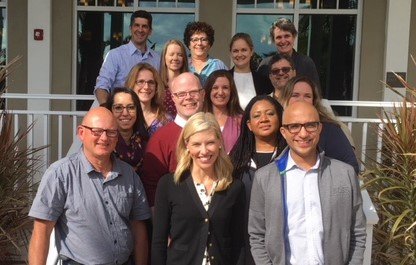
eAudiology: Shifting from theory to practice
The profession of audiology is changing at a rapid pace. A family-centered care approach to eAudiology can help ease the transition from a traditional model to an innovative one.
Every day I awaken to a song chosen from my playlist by Alexa; measure the number of steps I walk, set my destination in my GPS and get a cup of coffee from the food cart outside my office (OK, not everything is internet-based).
The way we do things has changed. The evolution of technology has introduced new innovative ways to deal with life’s ever changing systems from entertainment, to transportation to healthcare. These changes have made an impact on health and health service delivery and it is now time for the audiology community to accept, embrace and grow with it.

A collaboration is born
Early in 2018, Phonak convened a group of audiologists from around the world to discuss and initiate a plan to bring the concept of eAudiology forward and encourage its utilization. The result was a consensus paper published in the August issue of Hearing Review. The goal of this paper was to provide a standardized use of terminology and identify the benefits and obstacles to the implementation of eServices.
There have been many terms used to describe remote delivery of services to patients in healthcare such as tele-medicine tele-practice, tele-audiology, etc. The term eAudiology was agreed upon as it was felt to be inclusive of all the services audiologists provide to their patients such as screening assessment, coaching, counseling fitting and management. It has been shown, that while most audiologists had a favorable attitude toward eAudiology services, only a small number had actual experience with it (Eikelboom & Swanepoel, 2016).
Tackling eAudiology with Family-Centered Care
It should be no surprise to anyone that the profession of audiology is changing at a rapid pace and we must embrace the technologies available to us and use them to improve our patient reach and practice effectiveness. Of course there are barriers and obstacles for both providers and patients that may impede this journey, but it is now the time to at least begin the process. Issues such as fear of technology, uncertainty about remote service provision, and the reduction of the patient inter-personal connection to name a few. It may be a challenge for both the providers and the patient. The panel believed that embracing a family-centered care (FCC) approach to practice can help ease the transitions from a traditional model to an innovative one.
Next steps to making eAudiology a reality
As we begin this process of exploring the world of eAudiology, we must examine some basic issues such as patient candidacy (‘Will they be able to manage technology?’), clinician education and training (‘Will your staff buy into this new service delivery model?’), technological infrastructure (‘Do you have the necessary equipment and bandwidth?’) and the regulatory environment (‘What are your local laws for practice?’). As we begin to tackle these matters and others that will develop, we will be taking the steps necessary to make eAudiology a reality. So embrace the concept, fasten your seat belt and come along for the ride.
For additional information on FCC, please refer to the Phonak series of Family-Centered Care articles available.
Joseph Montano’s recorded webinar on this same topic will be available on Phonak Learning (accessible in participating countries). Watch for its promotion on social media or search #eaudiologyphonak directly on LinkedIn, Twitter and Facebook. For more information on all eAudiology webinars, please visit https://learning.phonakpro.com.
Eikelboom, R.H., Swanepoel, D.W. (2016) International survey of audiologists’ attitudes toward telehealth. American Journal of Audiology , 25, 295-298.
Montano J, Angley G, Ryan-Bane C, et al. (2018). eAudiology: Shifting from theory to practice. Hearing Review, 25(9):20-24.
